Is Dropshipping Worth It In 2024? Pros And Cons You Should Know

Is dropshipping worth it?
This is a common question many have as they look into dropshipping as a possible online business venture, and it’s a fair question.
When you learn that you can start an online store in a manner of hours with no inventory and no storefront to manage, you get a little skeptical.
In this post, we examine the dropshipping business model by breaking down all the pros and cons you need to know about.
Is dropshipping worth it? Why it is for many
Let’s start with a couple of statistics.
According to Statista, the global market size for the dropshipping industry is expected to grow to over $400 billion by 2026.
This is inline with dropshipping’s rise in popularity over the years, as seen on Google Trends.
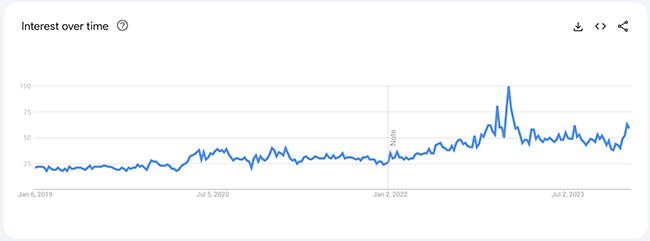
Even so, is dropshipping worth it as an ecommerce model?
The dropshipping business model is an alternative to traditional online retail in which you either make and/or store your own inventory and fulfill online orders from your own warehouse.
When you have a dropshipping business, you pay a supplier to fulfill orders for you from their own warehouse.
It’s done automatically through applications you can set up for your online store, such as by connecting your Shopify store to a dropshipping platform like AliExpress through Spocket.

You can use Spocket to import AliExpress products into your Shopify store.
After publishing your product pages, setting up the rest of your site and finally launching it, any order that’s placed gets sent to your dropshipping supplier.
They’ll ship the order automatically to your customer and will even process returns.
This is why dropshipping is worth it for so many businesses, especially startups.
You can get an online store up and running today with little cost, but what’s the catch? That’s what we’re going to explore in this post.
Without further adieu, let’s get into our list of pros and cons for dropshipping.
Is dropshipping worth it: pros & cons
Pros of dropshipping
- Only pay when you sell.
- Test out new products at the drop of a hat.
- No inventory management.
- No need for a storefront.
- Flexible work schedule.
- Grow your business as fast as you want.
Cons of dropshipping
- Returns can get messy.
- Lower profit margins.
- Can’t oversee the shipping process.
- Customer service can be complicated.
- Little control over pricing.
- No control over quality.
Dropshipping pros
1. Only pay when you sell
When you browse dropshipping platforms like AliExpress, the prices you see are the prices you’ll pay when a customer orders something from your shop.
Because you don’t fulfill orders yourself and suppliers only fulfill them when they receive them, you don’t pay those prices until you sell products.
This means you won’t spend money on products until you sell them.
You earn money by selling products for a profit just as you would in traditional retail.
Take this gel nail polish as an example. It costs $4.77 per bottle (on sale).
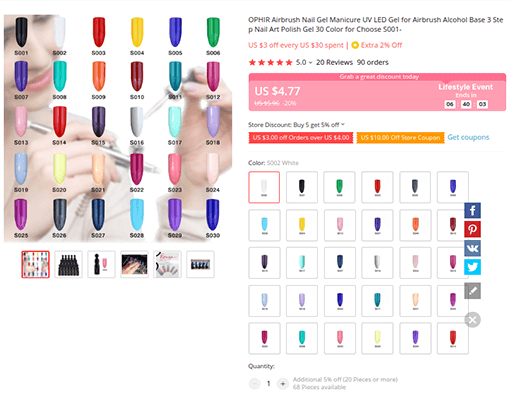
This means if we list it on our dropshipping store for $14.99 and a customer buys a bottle, we’ll receive $10.22 and the supplier will receive $4.77.
In traditional retail, we’d have to buy that bottle, and then sell it. This is why dropshipping is seen as a profitable business model.
2. Test out new products at the drop of a hat
This is a huge secondary advantage of not having to buy your inventory upfront.
If the products you’re currently selling aren’t doing well, all you need to do is remove them from your shop and import new products from your dropshipping supplier.
This allows you to test new products and a wide variety of products with minimal risk.
Are you currently selling gel nail polish but only in five colors? Try adding every color your supplier offers to your product page.
Or better yet, try adding a different style of nail polish to your store or even complementary products, such as nail polish remover and nail care products.
You can even combine this practice with new marketing strategies to experiment even more and possibly find your next big hit.
3. No inventory management
Along with not having to pay for inventory upfront, you also don’t need to worry about finding the space to store inventory, and you most certainly don’t need to worry about managing it.
Your dropshipping suppliers will handle all of that for you.
In traditional retail, you’d need to keep track of how much stock you have for each item and would need to worry about ordering more before you run out.

With a dropshipping business, if an item is out of stock, all you need to do is switch dropshipping suppliers in a few simple clicks.
The most you need to do is keep track of how much you’re selling of each product and each individual product variation.
This will help you stay on top of what’s working, products that need improvement and products you should get rid of entirely.
All in all, lack of inventory management is one of the biggest advantages of dropshipping.
4. No need for a storefront
This is more of an advantage of ecommerce in general, but it’s just as relevant for dropshipping businesses.
Not only can you do without paying for a warehouse to store inventory, you also don’t need to worry about finding the money to pay for a storefront.
All you need is an ecommerce website capable of dropshipping.
That’s any website, but ecommerce platforms like Shopify and WooCommerce make setting everything up much more efficient.

You will, however, face the same challenges as you would in a traditional storefront.
These include attracting customers to your store and generating sales.
You’ll also have to pay for hosting and your site’s design, but these costs are still much lower than paying for a storefront.
5. Flexible work schedule
The ecommerce business model already allows for a flexible work schedule.
In traditional retail, you need to be present in order to make sales. Sure, vending machines exist as do self-checkouts, but these methods aren’t suitable for all retail models.
When you run an online store, customers check themselves out, and you don’t need to worry about them stealing merchandise while they do it.
Even so, without dropshipping, ecommerce stores still come with quite a few responsibilities on a day-to-day basis.
You and your team will need to be in charge of inventory management, fulfilling orders and processing returns.

You’ll even need to handle critical customer service tickets on top of everything else. Soon enough, your side hustle becomes a full-time job with overtime.
Let’s throw dropshipping into the mix. Suddenly, you and your team have much fewer tasks to take care of, especially in your day-to-day.
You won’t need to worry about keeping track of inventory stock, restocking or fulfilling orders.
This frees up a lot of your time and allows you to work from anywhere at almost anytime, aside from needing to be present to answer customer service requests in a timely manner.
This is the level of flexibility a dropshipping business provides.
6. Grow your business as fast as you want
With traditional retail models and even most ecommerce models, you and your employees have quite a few tasks to worry about on a daily basis, and most are time sensitive.
We established this in a previous list item.
However, what we didn’t cover is how these tasks can really hinder your business’ growth.
If your products are selling well, you’ll be tempted to take on more inventory and bring new products into your store on top of the products you currently sell.
This comes with quite a few additional costs, including bigger storefronts, more warehouse space and more employees to handle the additional workload.
Because ecommerce and dropshipping eliminate the need for a storefront, warehouse and order fulfillment, you can add as many new products to your store without having to worry about additional costs, outside of hosting costs.
This makes the dropshipping business model one of the most scalable retail models out there.
Dropshipping cons
1. Returns can get messy
Generally, suppliers handle returns for you, but things get complicated when you use multiple suppliers from around the world.
Let’s say your customer orders five bottles of gel nail polish from five different product pages as well as a nail care kit.
Three bottles came from one supplier, two from another and the nail care kit from a third.
Now, your customer wants to return all of them 15 days after they were ordered, and they want a full refund. Here’s why this is complicated.
When you run a dropshipping store, your suppliers’ return policies become your return policies. If your supplier accepts returns within 60 days, you must accept returns within 60 days.
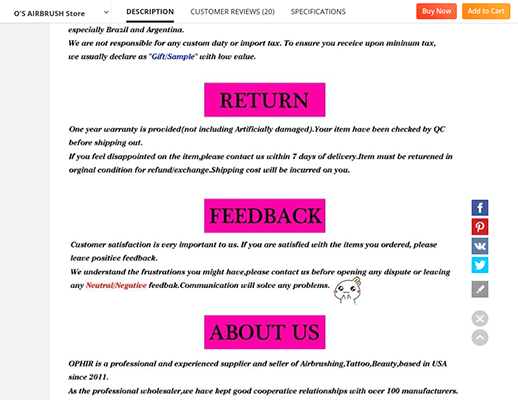
So, if your customer wants a refund after 15 days, you need to honor it.
However, if you want your money back, every product you paid for needs to be returned to its supplier.
Some suppliers accept free returns. Some charge restocking fees. Others charge return shipping.
It’s up to you to decide how you want to handle situations like this. Because this order has three suppliers, it has to be returned in three separate shipments.
Some dropshippers set up PO boxes so customers can return products in one shipment. They’ll then take on the responsibility and shipping costs of getting each product back to its original supplier so they can recoup what they paid for it.

Other dropshippers have customers return products directly to suppliers. However, this can get complicated for customers when orders have multiple suppliers.
It can even be expensive for them if suppliers charge a lot for returns or if they’re international.
One solution many dropshippers resort to is issuing refunds to customers but letting them keep the original products. If there were issues with the products, they’ll even offer to send new versions free of charge.
This is the least complicated way to process returns, but it can get costly as you won’t get the money you paid for each product back from the supplier.
The best way to avoid too much hassle is by reviewing your suppliers’ return policies before you start selling and by only working with suppliers who ship from your region.
2. Lower profit margins
Lower profit margins are one way in which dropshipping can be more expensive than traditional retail and ecommerce models.
When you dropship, you only buy when customers order. This means you essentially buy each item one by one.
This eliminates access to bulk discounts and discounts on shipping. You’ll also spend money on shipping per item rather than one shipping cost for a bulk order.

Some dropshippers also sell branded products. When they do, they’re still selling someone else’s product shipped from a third-party supplier.
However, the supplier offers a service in which the dropshipper can place their own branding on the product. This costs extra, and the service is typically charged on each item.
You can still charge customers whatever you want for these products, but you’ll likely have to set prices much higher than your competitors’ have them to make up for the extra costs.
3. Can’t oversee the shipping process
Let’s call on our example order from the first con on this list. The customer ordered six products in total, but they’re being shipped from three different suppliers.
This means your customer is going to receive three different packages for a single order. This isn’t unheard of in ecommerce, but it can be quite inconvenient for customers.
When you manage inventory in your own warehouse, you can easily process an order like this under one roof and send all six products in one box.
You also have total control over who you ship with.
With dropshipping, you use whatever shipping services your supplier uses. This could be the United States Postal Service, or it could be a service you’ve never even heard of.
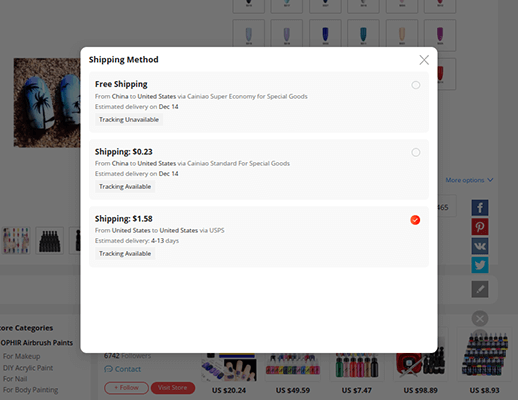
This is just one aspect of dropshipping you’ll have to get used to not having any control over.
4. Customer service can be complicated
Customer service is another complication that comes with not managing your own inventory and shipping process.
Because you don’t manage these things yourself, you essentially act as a middle man when customers have problems with orders.
If packages get lost in shipment, your customer will contact you, but you’ll have to get in touch with your supplier or your supplier’s delivery service, and then get back to your customer.
It creates a form of customer service that’s anything but convenient for customers.
5. Little control over pricing
We’ve already established how you don’t have access to bulk discounts and bulk shipping discounts when you dropship.
This is just one way in which you have little control over pricing in the industry.
However, because you don’t make your own products as some retailers do, you have no control over how much suppliers decide to change prices for the products you sell in your store.
Sure, you can set your own prices to whatever you want them to, but that $4.77 bottle of gel nail polish can easily change to $7 tomorrow with no warning.
If you use branded products, your supplier can also charge more for the service whenever they want.
6. No control over product quality
Our final disadvantage of the dropshipping model is another byproduct of not ever touching the merchandise you sell in your store.
When you do this and you also don’t make your own products, you have no control over the quality of the products you sell.
This is why it’s important to read the reviews and sale data on dropshipping platforms like AliExpress.
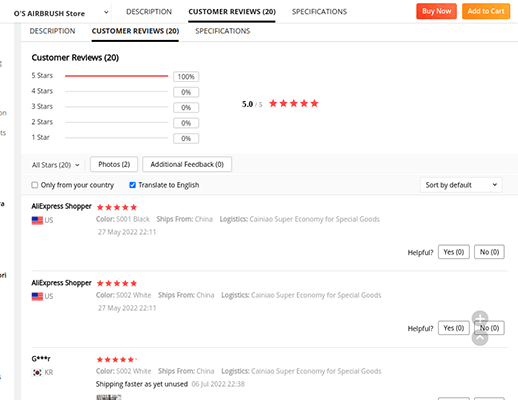
Top ecommerce platforms for dropshipping
Is it difficult to get started with dropshipping? These days, definitely not. There are plenty of platforms available that make the process easier.
First, you’re going to need an ecommerce store to sell your dropshipping products on.
Shopify is a popular ecommerce platform in general, but especially for dropshipping stores because it integrates with third-party platforms that can automate dropshipping.
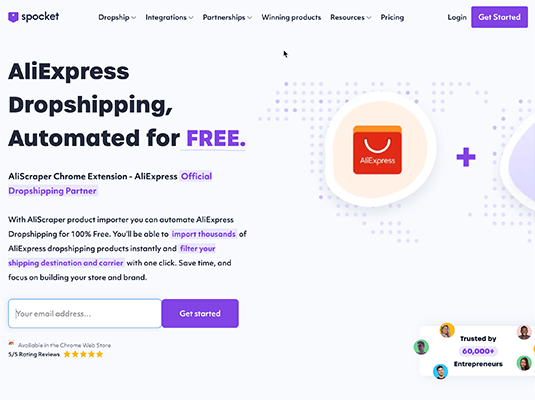
For example, the Spocket app makes it easy to connect a Shopify store to AliExpress and import products and product data automatically.
You can also connect Spocket to a number of other popular platforms – BigCommerce, Wix, Squarespace, WooCommerce, and more.
Is dropshipping worth it: the final verdict
So, is dropshipping worth it? That’s up to you.
The market size will only grow, and you’ll always have competition to deal with, so you shouldn’t worry too much about the profitability of dropshipping.
So, let’s discuss everything else.
Dropshipping is the cheapest way to get an online store up and running. So, if you don’t have thousands and thousands of dollars to spend on inventory, dropshipping is the best way for you to get up and running.
It’s also a great way to achieve the flexibility you’ve always been looking for in a career.
All you need is a computer, internet connection and phone to start and run a dropshipping business. This means you can work from anywhere at almost anytime of the day you want.
When you ask is dropshipping worth it or not, you should ask yourself if you’re prepared to deal with all of its complications: messy returns, being the middleman between your customers and your suppliers, not being in control of anything.
There are solutions to all of these problems, but if you aren’t willing to go the extra mile and prepare for them before they come, you may want to find another business venture.
Related reading:
- The Latest Ecommerce Stats And Trends
- 11 Best AliExpress Alternatives & Competitors (Comparison)
- The Best Dropshipping Alternatives (Pros + Cons)
Disclosure: Our content is reader-supported. If you click on certain links we may make a commission.
